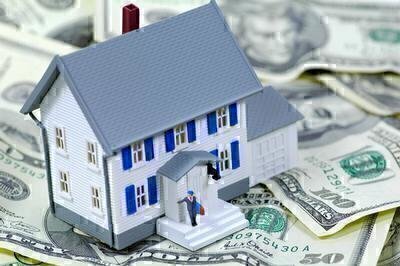How Are Homeowners Insurance Rates Determined?
Last updated May 2023
 The cost of your insurance policy depends not only on the coverage you select, but also on several other factors.
The cost of your insurance policy depends not only on the coverage you select, but also on several other factors.
Big Factor: Choice of Insurer
Our researchers collected annual premiums for sample policyholders from the companies that write almost all of the homeowners insurance business in the area and found costs vary significantly from company to company. Some companies charge twice as much as others for the same coverage.
Big Factor: Cost to Rebuild Your Home After a Total Loss
Your rates are also largely affected by how much insurance you buy. Make sure insurers calculate an accurate estimate of your home’s replacement cost, which will be used to determine how much dwelling insurance you’ll buy. The replacement value isn’t the same as market value; the latter includes the value of the land and your home’s foundation—two expensive components of your property that don’t need to be insured against wind, fire, etc. Replacement value is an estimate of what it would cost to rebuild your house completely on the land that you own.
To determine replacement cost, most insurance companies rely on estimates obtained from valuation databases and appraisals when you take out your policy. But ultimately it’s up to policyholders to buy the right amount of coverage and then add to it as construction costs rise.
If you underinsure, you will not be fully covered in the event of a total loss. If, for example, your home is insured for $400,000 and burns to the ground, and it costs $600,000 to rebuild it, the most you will receive from your insurer is $400,000—even if the insurer estimated the too-low replacement cost. On the other hand, if you overinsure you’ll pay for coverage you don’t need and could never make claims on.
The good news is that in the last decade insurance companies have gotten far better about accurately estimating the replacement costs. Most subscribe to databases that are periodically updated with construction costs and details on homes’ square footage; some even tap into building permit systems to keep track of additions and renovations.
You can buy optional policies to protect against being underinsured, including a guaranteed replacement cost provision, extended dwelling coverage, or an inflation-guard endorsement. Some companies provide these add-ons in their standard coverages.
Although it is ultimately your responsibility to buy enough insurance to fully cover your home, you will be in a better position to argue for proper compensation in the event of a total loss if your home is appraised on a regular basis—especially if the insurer conducts the appraisal. Also promptly report any home improvements. If you add a room, remodel a kitchen, or finish a basement, increase your dwelling coverage accordingly.
Big Factor: Your Credit Rating
In Illinois, insurers use credit scores to help determine premiums and with many companies your credit score influences the rates you’re offered more than anything else: The prices most companies offer customers with poor credit are double what they offer customers with excellent credit—with some companies, the poor-credit penalty more than triples their rates. Many consumer groups—including Checkbook—oppose this, arguing that the scores are not a direct measure of insurance risk and that using them in insurance pricing hurts low-income consumers, whose scores tend to be lower on average.
Big Factor: Claims History
Because claims can drastically increase your premiums, try to limit how many you make.
The most common result of filing too many claims? Your insurer may refuse to renew your policy. You will have trouble finding another reasonably priced insurer that will agree to write you a new policy, and when you find one you’ll be considered a high-risk customer and charged high premiums. In a worst-case scenario, you won’t find an insurer and will be forced to obtain coverage with your state’s FAIR [Fair Access to Insurance Requirements] plan, which is likely to charge far higher premiums than even the most expensive private insurers.
Even if your claims history doesn’t cause your insurer to drop your policy, making claims will probably raise your premiums. Some insurers offer steep discounts to customers who have not made any claims during a two-to-five-year period. Others simply increase rates for policyholders who make claims.
 Big Factor: Where You Live
Big Factor: Where You Live
Insurance companies divide areas into territories and assign rates based on the losses companies experience in each one plus factors like the quality of police and fire departments, crime statistics, and general level of maintenance of the housing stock. These factors affect prices substantially from territory to territory in the Chicago area.
Big Factor: Proximity and Quality of Fire Protection
Within territories, companies set rates according to the property’s proximity to a fire station and a fire hydrant, and on the quality of the fire department and water supply. Rates are usually much lower for homes in “protected” areas within five miles of a fire station and within 500 to 1,000 feet of a hydrant. Premiums for homeowners insurance in unprotected areas are typically 40 to 60 percent higher than in protected areas.
Moderate Factor: Building Materials
Insurance companies rate houses as frame, masonry, “superior,” or in a similar construction category. The lowest premiums go to houses in the “superior” category—where all floors, the roof, and all exterior walls are constructed from noncombustible materials such as concrete, metal, or gypsum. The masonry construction category includes houses with exterior walls made of a noncombustible material such as brick, stone, or adobe, but that have floors or roofs made of combustible materials. The most expensive rating is for wood-frame houses, including houses with wood, vinyl, or aluminum siding.
Premiums for superior construction are about 15 percent less than for masonry. At a location with good fire protection, frame construction costs on average eight percent more than masonry construction. At a location with poor fire protection, construction materials matter more because frame houses are more likely to burn down completely. In such a location, total premiums are about 20 percent higher for a frame house than for a masonry one.
Moderate Factor: Your Deductible
All homeowners insurance policies include deductibles; your loss must exceed that amount before the insurance company’s coverage takes effect. Most companies apply a standard deductible of $1,000 or $2,000, but some might require you to take a deductible equal to a percentage of your dwelling coverage. All companies allow you to raise your deductible above the basic level.
By taking as high a deductible as you can, you reduce your premiums substantially. Taking a $1,000 deductible instead of $500 will save you on average about 10 percent a year off your premiums. By moving from a $1,000 deductible to a $2,500 deductible, you’ll on average lower your premiums by about 10 to 15 percent. Taking a $5,000 deductible instead of $1,000 will on average save you about 20 to 30 percent per year.
Take a high deductible, and you’re also less likely to file small claims that spur future premium hikes. Remember, insurance is meant to protect you from losses that you can’t afford to cover yourself. If you buy insurance for small losses, you pay insurance company overhead—sales, administrative, and claims handling costs—to deal with losses you could afford to pay. Determine how big a loss you can incur without unacceptably disrupting your life, and then set your insurance deductible levels accordingly.
 Moderate Factor: Age of Your Home
Moderate Factor: Age of Your Home
Most companies offer a premium discount on homes less than 10 years old; some offer discounts on those less than 25 years old. This discount can be 50 percent for brand-new houses, but only 25 percent or so for five-year-old ones, and likely five percent or less for older homes.
If your house was built before 1930, you may be required to purchase an expensive specialty policy. You’ll also pay far higher premiums on places in historic districts, where bylaws usually require exterior damage to be repaired to replicate the original appearance. Also, because many insurers won’t write policies in these historic neighborhoods, you may have to turn to a company that specializes in old or historic homes, like Chubb.
Moderate Factor: Age and Type of Roof
Tile and metal roofs cost the least amount to insure; wood shingles often mean huge premium hikes.
Many insurers provide small discounts (five to 10 percent) for homes with roofs replaced within the last five to 10 years. If your roof is older than that or nearing the end of its lifespan, you might have trouble switching to another insurer; many insurers won’t underwrite a policy if the home’s roof is more than 20 years old.
Small-to-Moderate Factor: Dual-Policy Discounts
If you purchase auto and homeowners insurance from the same company, you might get a discount off your homeowners premium or a lower auto premium. Some insurers will cut both.
Keep in mind that such discounts won’t make a high-priced company a good deal. Click here for our most recent report on auto insurance; we will issue a new report next year.
Small Factor: Features of Your Home
Most insurers charge slightly higher premiums if your home has—
- A fireplace or wood-burning stove;
- A pool, tennis court, trampoline, or outdoor hot tub;
- A fully or partially finished basement;
- A garage located beneath a living area;
- An electrical system not updated with a circuit breaker; or
- A furnace more than 20 years old.
Small Factor: If You Have a Dog
Most insurers charge higher premiums to homeowners who own a rottweiler, pit bull, or other breed that the company believes is more likely to attack strangers. Most insurers charge higher premiums to homeowners whose dogs have bitten strangers. Some insurers specifically exclude damages caused by dog bites from their liability coverage.
Small Factor: Protective Devices
You can get discounts for installing devices to protect your home from burglary and fire. Deadbolt locks, fire and burglar alarms, fire extinguishers, or a combination of these devices will generally save you one or two percent. Bigger discounts—typically an additional five to 10 percent—are available for homes that have alarms that report to a central-station monitoring service. Click here for ratings of home security system installers. The biggest discounts usually go to homes with full sprinkler systems.
Small Factor: Smoking
Smoking increases fire risk, so most insurers charge slightly higher premiums for households with one or more smokers.


